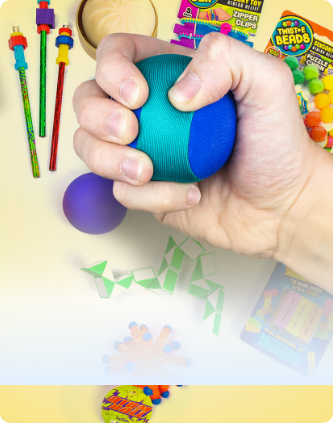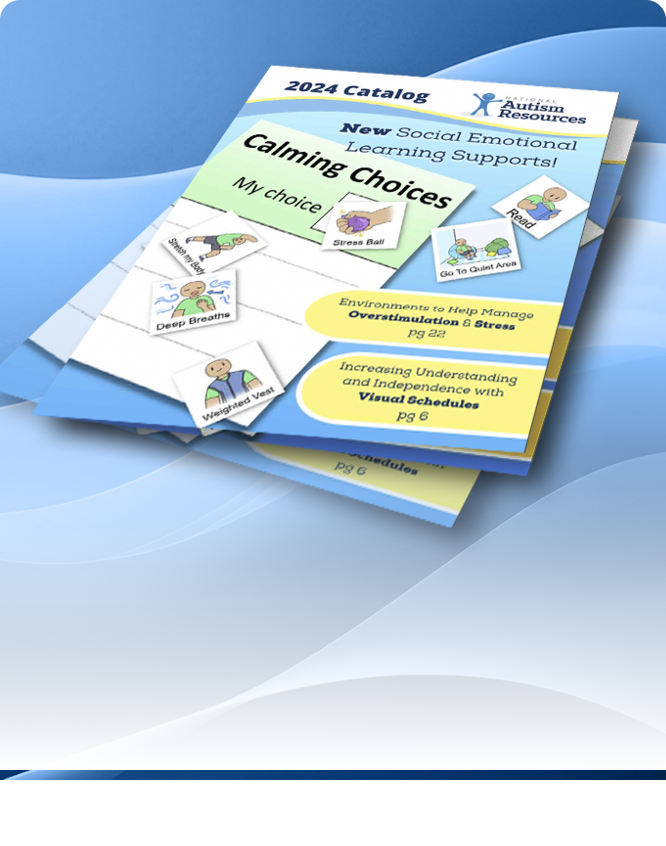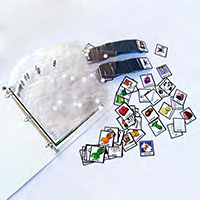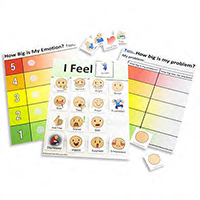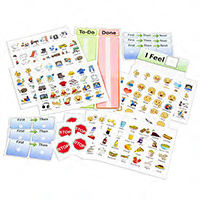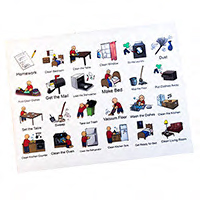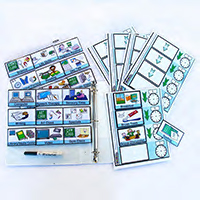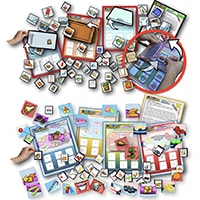 What is PECS?
What is PECS?At one time many people opposed the use of PECS and sign language to teach children with autism to communicate. They argued that these methods would hurt the development of spoken language. However, several studies have shown PECS actually helps people develop verbal language.
The child with autism learns to exchange single pictures for items or activities they really want.
PECS PHASE II: Distance and Persistence
Still using single pictures, the child with autism learn to generalize this new skill by using it in different places, with different people and across distances. They are also taught to be more persistent communicators.
PECS PHASE III: Picture Discrimination
The child with autism learns to select from two or more pictures to ask for their favorite things. These are placed in a communication book, a ring binder with Velcro strips where pictures are stored and easily removed for communication.
PECS PHASE IV: Sentence Structure
The child with autism learns to construct simple sentences on a detachable sentence strip using an "I want" picture followed by a picture of the item being requested.
PECS PHASE V: Answering Questions
The child with autism learns to use PECS to answer the question, "What do you want?"
PECS PHASE VI: Commenting
Now the child with autism is taught to comment in response to questions such as, What do you see?, What do you hear? and What is it? They learn to make up sentences starting with I see, I hear, I feel, It is a, etc.
Shop All Picture Communication Cards >>
Many individuals who have expressive communication limitations also have difficulty understanding how communication works. Because of this, they may not be interested in trying to communicate with others. Even if these individuals can speak some words, they may not use verbal words in meaningful communication exchanges with others.
A big challenge in teaching independent expressive communication to some students is finding a way to motivate them to participate and learn. You must introduce and teach picture communication in a fun and motivating way for the student to want to participate in the session and to learn structured expressive communication skills. To make the communicative messages more understandable it can be beneficial to use matching picture symbols that exactly represent the activity.
Communicating with pictures and identifying symbolic representations may be difficult for some individuals. An experienced Speech Language Pathologist (SLP) can lend needed guidance to those trying to implement picture communication. We offer instructional materials that may be beneficial to trained team members. Always keep in mind the student’s abilities and goals before using these or any related learning materials.
Advantages of Picture Communication
- The listener does not need special training because pictures are easy to understand and are often labeled.
- Simple matching makes initial communication easier.
- This is a research based intervention that is based on Skinner’s analysis of verbal behavior.
- Starting with PECS can help avoid creating a negative emotional history related to speech.
- Many individuals start with the ability to point to what they want so there is a high possibility for success.
- PECS is a fairly inexpensive, low tech language intervention.
More Helpful Articles:
Using Visual Supports to Enhance Communication and Promote Literacy
How to Teach Deep Breathing with Visual Supports
Using Visual Supports to Help Your Student with Autism
Executive Function and ASD: Evidence-Based Practices to Help ALL Learners Succeed


